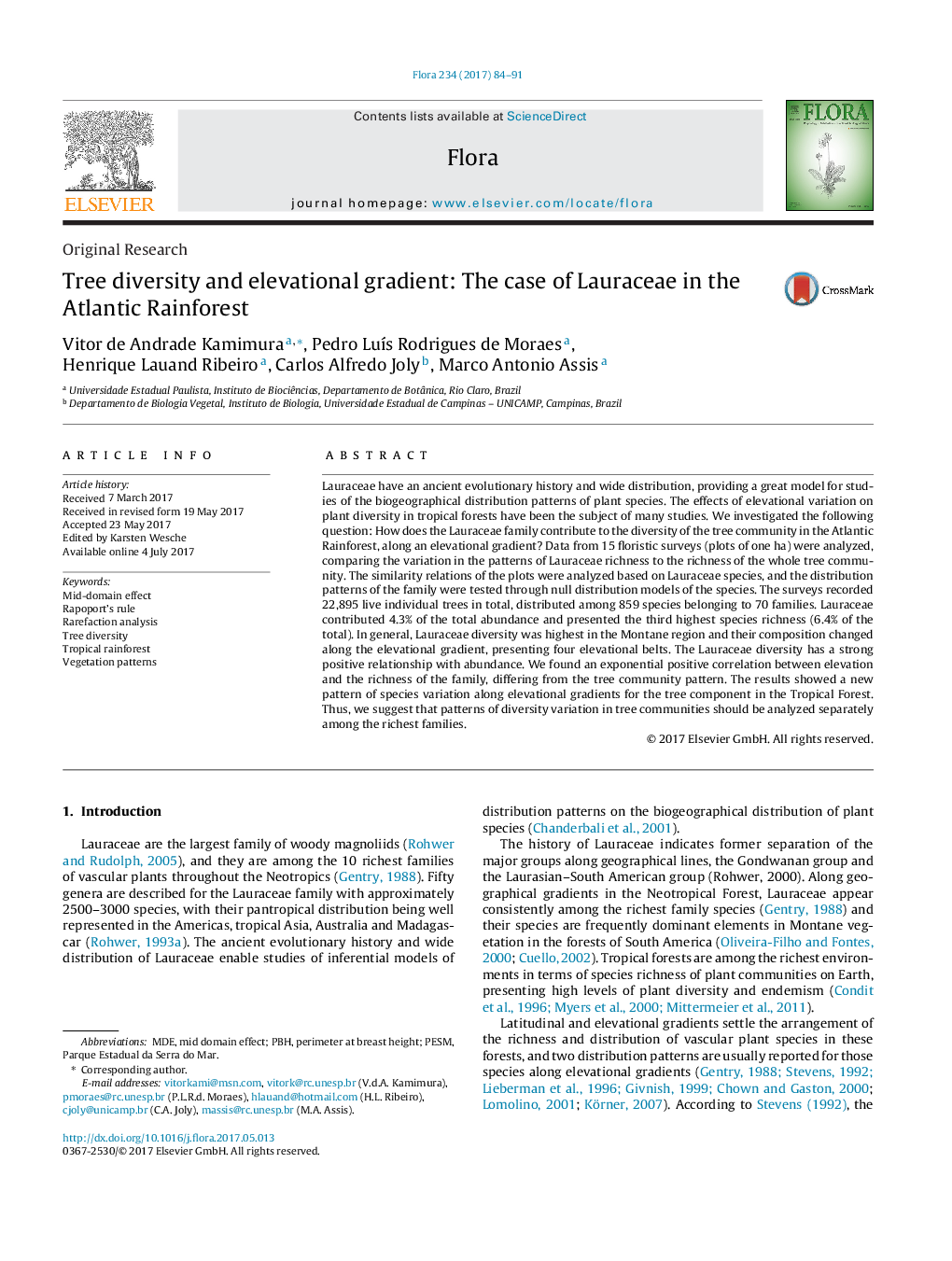| Article ID | Journal | Published Year | Pages | File Type |
|---|---|---|---|---|
| 5532317 | Flora - Morphology, Distribution, Functional Ecology of Plants | 2017 | 8 Pages |
â¢Evaluation of the variation in tree diversity along an elevational gradient.â¢New pattern of species variation along elevational gradients for the tree component.â¢Lauraceae richness was positively correlated with elevation.â¢Lauraceae abundance was positively correlated with elevation.â¢Lauraceae showed changes in composition associated with elevational zonation.
Lauraceae have an ancient evolutionary history and wide distribution, providing a great model for studies of the biogeographical distribution patterns of plant species. The effects of elevational variation on plant diversity in tropical forests have been the subject of many studies. We investigated the following question: How does the Lauraceae family contribute to the diversity of the tree community in the Atlantic Rainforest, along an elevational gradient? Data from 15 floristic surveys (plots of one ha) were analyzed, comparing the variation in the patterns of Lauraceae richness to the richness of the whole tree community. The similarity relations of the plots were analyzed based on Lauraceae species, and the distribution patterns of the family were tested through null distribution models of the species. The surveys recorded 22,895 live individual trees in total, distributed among 859 species belonging to 70 families. Lauraceae contributed 4.3% of the total abundance and presented the third highest species richness (6.4% of the total). In general, Lauraceae diversity was highest in the Montane region and their composition changed along the elevational gradient, presenting four elevational belts. The Lauraceae diversity has a strong positive relationship with abundance. We found an exponential positive correlation between elevation and the richness of the family, differing from the tree community pattern. The results showed a new pattern of species variation along elevational gradients for the tree component in the Tropical Forest. Thus, we suggest that patterns of diversity variation in tree communities should be analyzed separately among the richest families.
